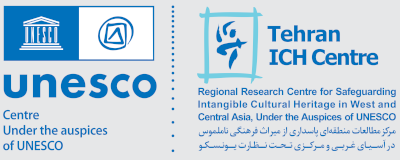Cultural Heritage is not limited to historical monuments or objects. It also includes living manifestations and traditions that we have inherited from our ancestors, and that we transmit to our offspring. These other manifestations are known as intangible cultural heritage (ICH).
UNESCO texts define ICH as follows:

“The Intangible Cultural Heritage means the practices, representations, expressions, knowledge, skills –as well as the instruments, objects, artefacts and cultural spaces associated therewith- that communities, groups and, in some cases, individuals recognize as part of their cultural heritage. This intangible cultural heritage, transmitted from generation to generation, is constantly recreated by communities and groups in response to their environment, their interaction with nature and their history, and provides them with a sense of identity and continuity, thus promoting respect for cultural diversity and human creativity.” (The 2003 Convention for the Safeguarding of the Intangible Cultural Heritage, Article 2)
UNESCO considers as effective, solely such intangible cultural heritage as is compatible with existing international human rights instruments, as well as with the requirements of mutual respect among communities, groups and individuals, and of sustainable development. (ibid.)
The Intangible Cultural Heritage encompasses the following domains (ibid., Para 2):
(a) oral traditions and expressions, including language as a vehicle of the intangible cultural heritage;
(b) performing arts;
(c) social practices, rituals and festive events;
(d) knowledge and practices concerning nature and the universe;
(e) traditional craftsmanship
Safeguarding the Intangible Cultural Heritage
The manifestations above are constantly in danger of disappearing due to their mostly oral nature; hence, the necessity of their safeguarding. Nevertheless, the intangible and the tangible forms of heritage are considerably different as regards the safeguarding methodologies of the two. To guarantee its continuation, ICH needs to be practiced within the community, be constantly re-created, and transmitted from generation to generation. Accordingly, safeguarding the intangible cultural heritage refers to any promotional measure that prepares the grounds needed for the materialisation of the abovementioned.
To materialise the issue of safeguarding the intangible cultural heritage, the General Assembly of UNESCO, at its 32nd Meeting, in 2003, ratified the Convention for the Safeguarding of the Intangible Cultural Heritage As the first binding instrument on the safeguarding of ICH, the purposes of the Convention are:
(a) to safeguard the intangible cultural heritage;
(b) to ensure respect for the intangible cultural heritage of the communities, groups and individuals concerned;
(c) to raise awareness at the local, national and international levels of the importance of the intangible cultural heritage, and of ensuring mutual appreciation thereof;
(d) to provide for international cooperation and assistance.
